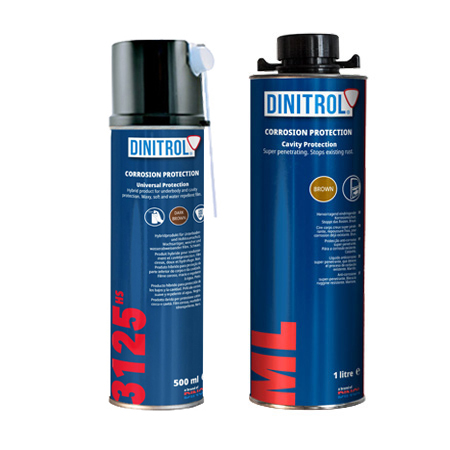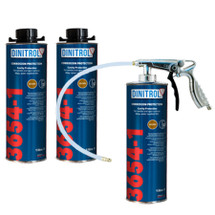Posted by Rejel on 26th Sep 2022
Why use DINITROL rust prevention versus Waxoyl?
Most car enthusiasts will agree that rust prevention is an important part of car maintenance particularly for older models and classic cars. So what are the steps to rust treatment and the following rust proofing? Typically this would be to either decide on a treatment centre to get a rust proofing application done professionally or to do it yourself and therefore decide what product to apply. Each area of your vehicle will need a product designed specifically for that application.
There are numerous auto related forum groups that discuss the various rust prevention products available on the market in the UK. Just type your question into the search engine and decide which thread replicates what you are searching for and then follow to read what other car enthusiasts are saying. One question frequently asked is, "How does Dinitrol compare to Waxoyl?"
DINITROL rust prevention versus Waxoyl 120-4?
In the interest of this article, we are going to look at the two market leaders in rust prevention in the UK. Many treatment centres use both of these products because of their ability to provide rust prevention with excellent outcomes. Both DINITROL and Waxoyl have their differences therefore it comes down to a matter of choice, application method, ease of use and post-treatment appearance:
- DINITROL 3125 compares very favourably with Waxoyl 120-4. Dinitrol has high creep and therefore gets into all the nooks and crannies of a car to give the best rust prevention possible. DINITROL 3125 also contains a rust inhibitor to neutralize any surface rust it comes in contact with.

- The big difference between these two products is that Waxoyl is an oil and wax mixed so it never cures. The result of which is that on hot days it will continue to drip out of any holes it was applied to - it will also give off an odour from the oil.
- DINITROL, on the other hand is a wax and solvent mix so when the solvent evaporates it leaves only wax which expands and contracts with temperature changes and no smell is emitted as aromatic solvents are used.
- When DINITROL cures it leaves a skin and stays soft underneath allowing it to self heal in all temperatures. This means that it will self-heal over any small scratches and stone chips.
The Practical Classics magazine ran tests on the outcomes of both products for their rust prevention ability. The results were backed up by the authors own observations over many years (that's not to say others may have different observations). His report stated that Waxoyl doesn't seem to penetrate any significant amounts of rust, whereas Dinitrol 3125 does (contains rust inhibitor).
Rust prevention products shouldn't be applied on damp or wet surfaces, The best time of the year to treat a vehicle is in early Autumn when there are more likely to be a few dry days. After a good hosing down to thoroughly clean and remove all traces of grit and mud, leave to dry and then go to work.

